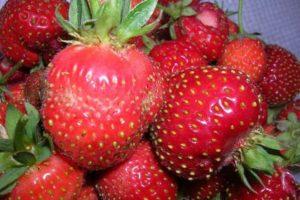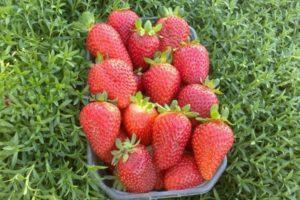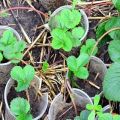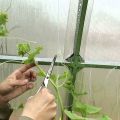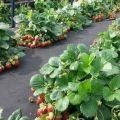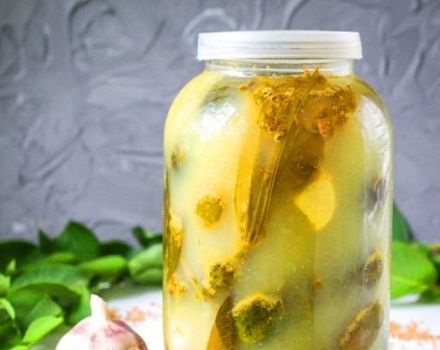How to propagate and plant strawberries in August with a mustache step by step
Garden strawberries are one of the most common berry crops in personal plots. The advantage of the culture is that strawberries grow rapidly, and after 1-2 years a whole plantation is obtained from several bushes. Strawberry mustache planting is carried out in August.
Content
- 1 Basic principles of mustache transplant
- 2 Advantages and disadvantages of the method
- 3 Optimal timing
- 4 Mustache breeding methods
- 5 Choosing the right mother bush
- 6 How to choose the right strawberry mustache for breeding
- 7 Preparing the landing site
- 8 Landing rules
- 9 Further care
- 10 What mistakes are made
Basic principles of mustache transplant
A strawberry mustache transplant is carried out in spring and autumn. In some cases, you can plant a berry in the summer. To grow a mustache, it is recommended to select several mother bushes at once. Such bushes will bear less fruit, but in the fall they will grow a lot of mustache with children.
You can plant a mustache without roots when they just started to appear. True, such seedlings will grow longer. Only healthy bushes are suitable for planting. The leaves should not have white or red spots, holes and insect marks. Only female bushes are used to grow mustaches. The female socket can be distinguished by the presence of a peduncle and berries. In addition, female bushes give a mustache several days later than male ones.
Advantages and disadvantages of the method
The advantages of the method:
- A large number of mustaches can be grown in a short time.
- Easy to grow.
- It is possible to adjust the number of whiskers.
- The cuttings retain all the characteristics of the mother plant.
- High survival rate of layering after transplantation.
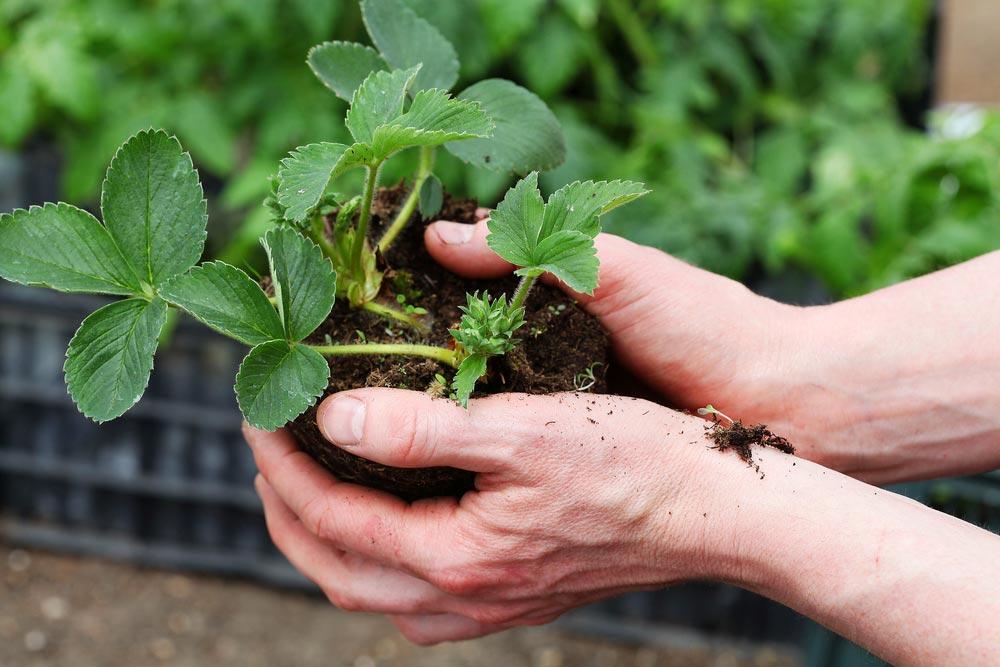
The disadvantages include the fact that the bushes selected for the cultivation of the mustache will not yield. Or it will be very poor. Also, if selected male bushes were selected for growing cuttings, there will be no abundant fruiting from such seedlings.
Optimal timing
Garden strawberries are planted in spring, summer or autumn. The second half of summer is considered a favorable time for planting. In the summer, after the fruiting period, the bushes give more layering, and this does not affect the yield.
The transplant is carried out from the second half of July to mid-September. The second half of summer is favorable for planting because the seedlings will not freeze and will quickly take root in a new place. And in the spring, strawberries will quickly enter the growth and fruiting phase.
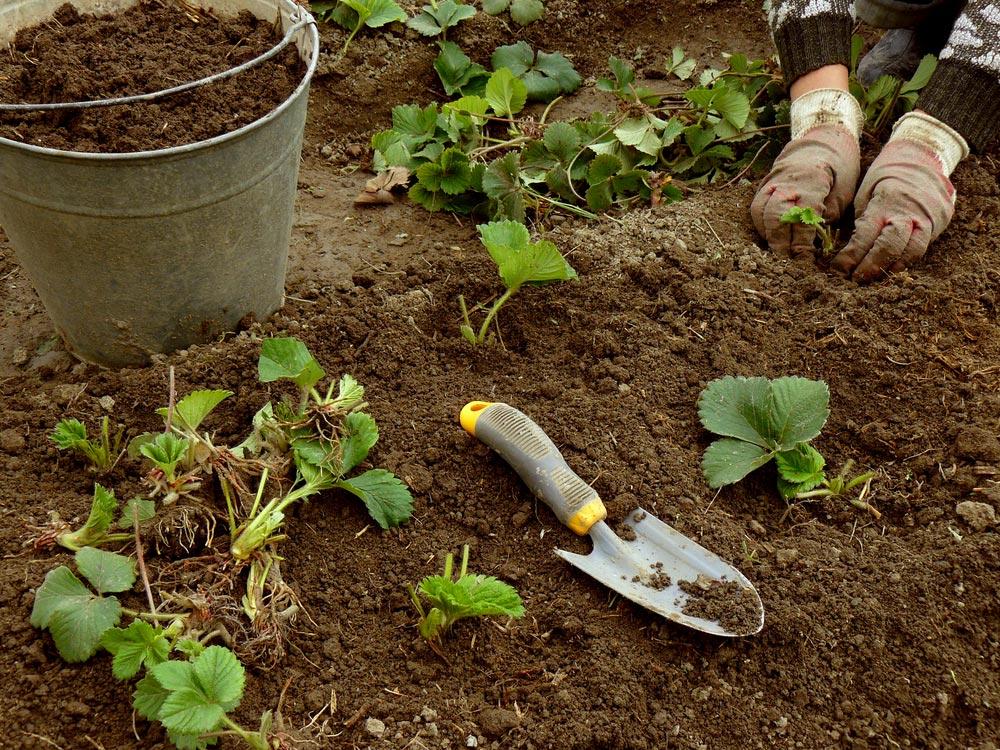
In those regions where the summer is hot, it is recommended to postpone the planting of garden strawberries to the second half of September. In areas with severe and frosty winters, spring is considered a favorable season for disembarkation.
Mustache breeding methods
There are two ways to breed a mustache. You can do this right in the garden.Or use separate pots in which the layers will grow.
How to propagate in pots
The propagation of garden strawberries with a mustache is carried out using plastic cups. For this, 3 mustaches are left on the mother bush. As soon as the layering has appeared, it is transferred into a glass filled with soil. Repeat until 4 layers grow on one mustache. Then the mustache is pinched. When the bushes grow up, they are transplanted in the usual way.
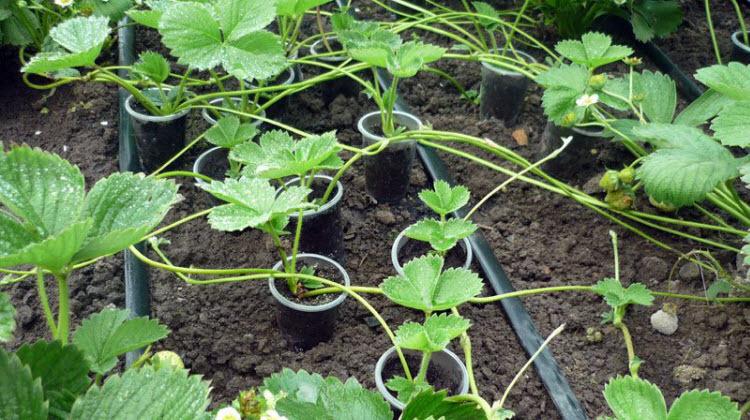
How to breed in the beds
Outdoor reproduction is considered the easiest way. Only 2-3-year-old bushes are chosen for growing mustaches. Old plants will not be able to produce healthy offspring. On each bush, 3 mustaches are set aside. If you leave many rosettes on each mustache, they will grow small and weak, you should not plant such layers. Therefore, 3-4 pieces are left. The rest is cut off.
Until the second half of August, the rosettes develop rapidly and form a strong root system. And at the end of August - beginning of September they are cut off and seated separately.
Choosing the right mother bush
The mother bush should be no older than 3 years. In addition, healthy bushes without signs of damage are chosen for the cultivation of mustaches. Sick and weak plants are not suitable for this purpose. Before choosing a mother bush, all plants are examined, and if there are signs of disease or the presence of insects on strawberries, they are not used to breed outlets.
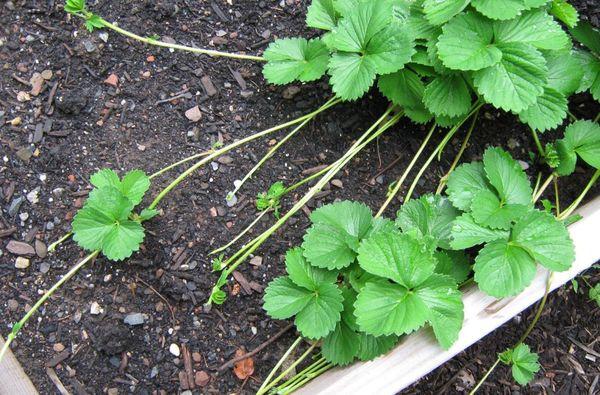
Not suitable for growing mustaches and fruiting strawberries. We'll have to wait until fruiting ends, and only then grow layers.
How to choose the right strawberry mustache for breeding
For further planting, healthy rosettes with a well-developed root system should be left. The rosettes are not separated from the mother plant until 3 large leaves each grow on them. The leaves must be healthy. A mustache from a fruiting bush is unsuitable for planting. Most of the nutrients in such a plant went to the growth of berries. The mustache of this strawberry is weak and not suitable for planting.
Preparing the landing site
When the layers grow up and the root system is formed, they are transplanted to a permanent place. It is recommended to plant seedlings on a hill, since strawberries do not tolerate excess moisture in the soil.

Also, strawberries are demanding on the composition of the soil and lighting. The main place where the garden will be located should be in the sun for most of the day. Loamy or sandy loam soil is suitable for planting. If the conditions for growth are optimal, then strawberries can grow in one place for up to 5 years.
The best predecessors for strawberries are:
- onion;
- celery;
- garlic;
- cabbage
- legumes;
- carrot.
It is not recommended to plant strawberries after raspberries, cucumbers, potatoes, tomatoes. It is also undesirable for spreading trees to grow nearby. A dense crown will create a shadow, and this will not affect the yield of garden strawberries in the best way.
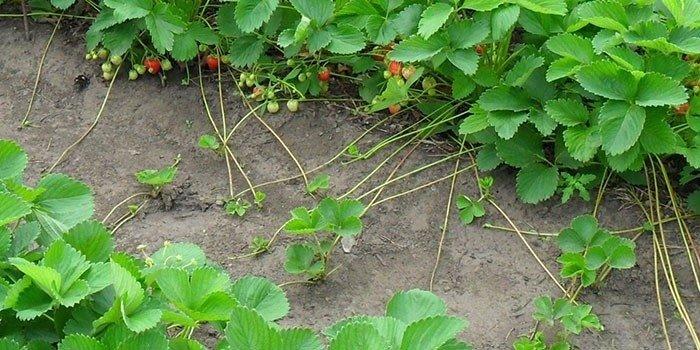
Landing rules
Planting is carried out on a dry warm day. It is advisable that this weather was for several days before and after landing. When planted during hot weather, the leaves will begin to dry. If the cuttings were grown in soil, they are cut from the mustache. When grown in peat cups, the mustache is also cut off, the cups are dug out and transplanted with them.
How to plant layers step by step:
- Dig up the soil a few weeks before the intended planting.
- Mix with rotted manure.
- Remove weeds.
- Make holes 20 cm deep and 25 cm wide.
- The distance between the holes is left up to 35 cm.
- A distance of up to 65 cm is left between the rows.
- The seedling is dug up along with part of the soil.
- Put the seedling in the hole, dig in with soil.
- Lightly compact the ground.
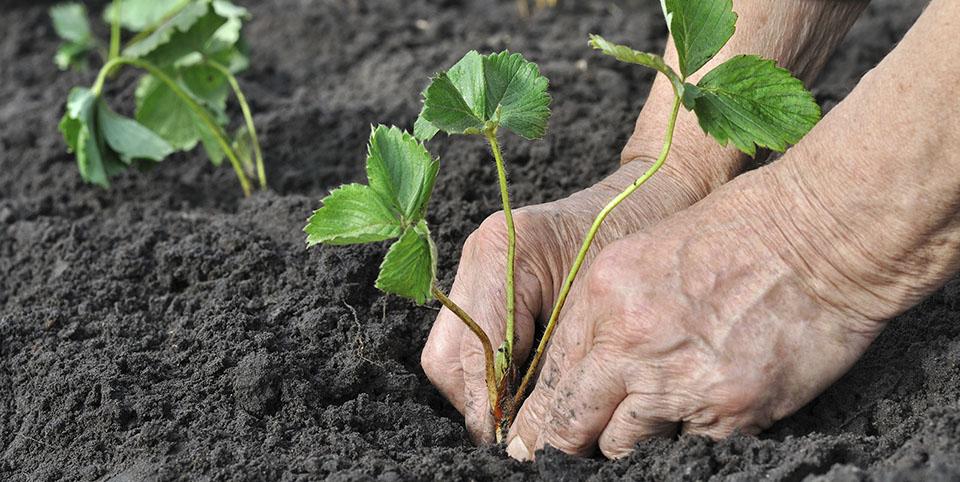
At the end of planting, water the wells with plenty of water. Only warm water is used for irrigation.Irrigation with cold water contributes to the development of fungal diseases. It is recommended to plant strawberries only in fertile soil.
Further care
After the seedlings have been transplanted, care will have to be organized. Regular care will increase yields and improve immunity to diseases. Watering, weeding, fertilization and mulching are considered mandatory procedures.
Watering
After transplanting, strawberries need frequent watering. Irrigation is carried out in the evening after sunset. Watering strawberries when the sun is shining can burn the leaves.
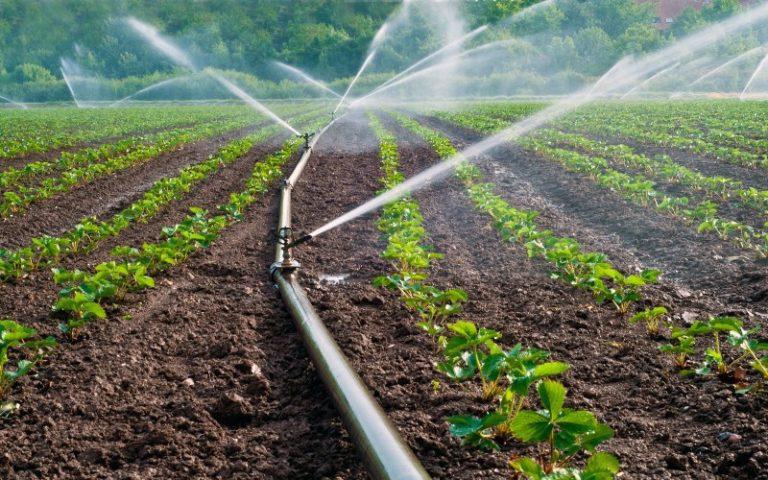
For this, warm water heated in the sun is used. The first weeks are watering the seedlings every day. Closer to the onset of cold weather, the amount of irrigation is reduced. Watering is completely stopped 2 weeks before the onset of frost.
The amount of moisture depends on the month in which the seedlings were planted. In spring, the amount of watering is greater than in autumn.
Mulching
It is necessary to mulch the soil so that moisture does not quickly evaporate, and the root system does not freeze in winter. Peat, straw, sawdust are used as mulch. The mulch layer should be at least 15 cm. Mulching is carried out in the fall, before the onset of frost. Mulch is not harvested in spring.
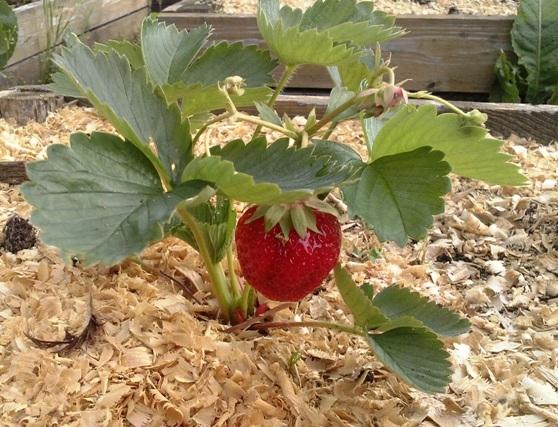
Weeding
If the seedlings were planted in the fall, the soil is not weeded. The procedure at this time is dangerous because during it there is a chance to damage the roots, and during the winter they will not have time to heal, and such seedlings may die.
Strawberries planted in spring and summer are weeded every 2 weeks. Weeds are removed during the procedure. Weed the soil 5-7 cm. It is best to do this before watering. With water, the soil will be saturated with oxygen, which will have a beneficial effect on the growth of strawberries.
Hilling
Hilling is carried out in August. By the fall, the beds should already be huddled. Such terms are due to the fact that during the procedure the root system can be injured, and this leads to freezing of strawberry roots in the garden winter.
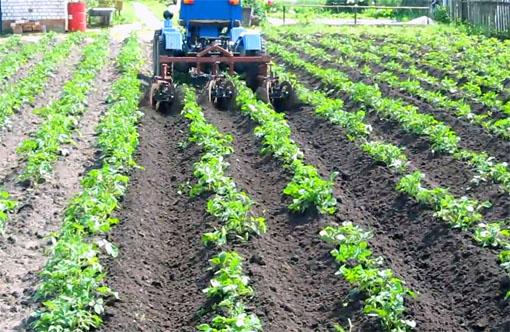
Pruning
Seedlings before the onset of winter are not pruned, as well as adult plants. In adult bushes, dry and yellow leaves are removed for the winter, as well as leaves with signs of damage. Prune adult strawberries carefully so as not to cut off healthy leaves.
Top dressing
Strawberries require different nutrients during different growing seasons. In the first half of the season, when there is an active growth process, nitrogen and organic fertilizers are added to the soil. Nitrogen accelerates growth and increases the number of ovaries. Nitrogen-containing dressings are applied if strawberries were planted in spring. For summer, and especially, autumn planting, the introduction of nitrogen is prohibited. By the end of summer, the growth rate of strawberries slows down and the bushes are preparing for winter.
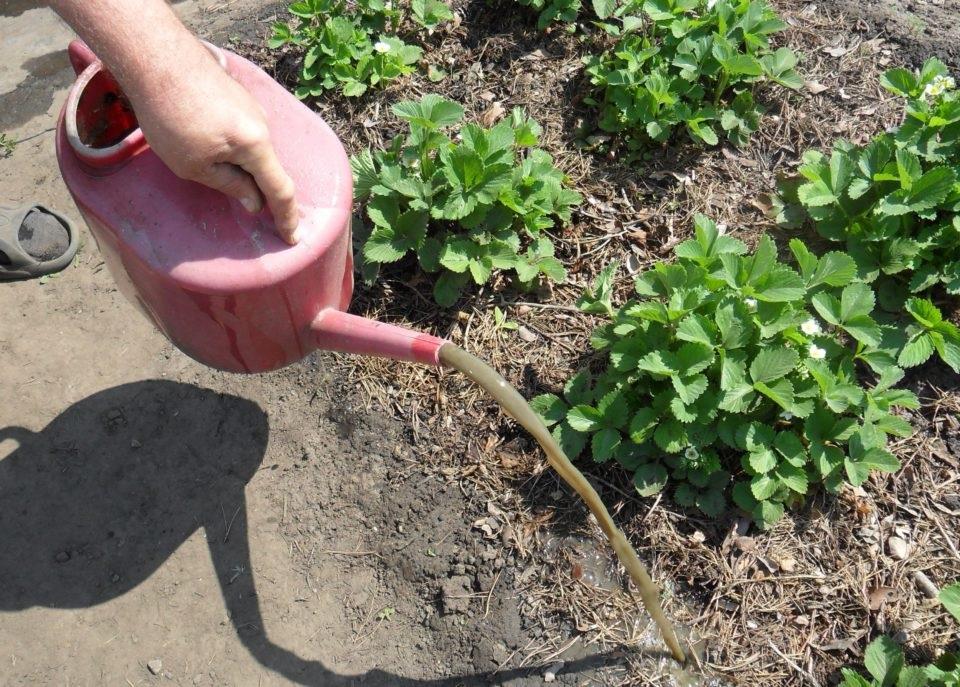
At the end of summer, fertilizers are rarely applied and in small quantities. Complex mineral compositions are used as dressings. They are scattered over the soil and then watered with warm water.
Another fertilizer is wood ash. It is bred in water and watered with strawberries. Or sprinkle ashes on the soil, and then water the beds. Suitable for feeding bone meal. The bone meal is poured with water.
After planting, superphosphate is added to the soil. It contains nitrogen and calcium. Nitrogen comes in a small concentration, without having any effect on growth. Superphosphate stimulates the growth of the root system, accelerates rooting in a new place. Before adding superphosphate for a day, pour water, stirring occasionally. In this form, it will quickly penetrate the tissues of strawberries.
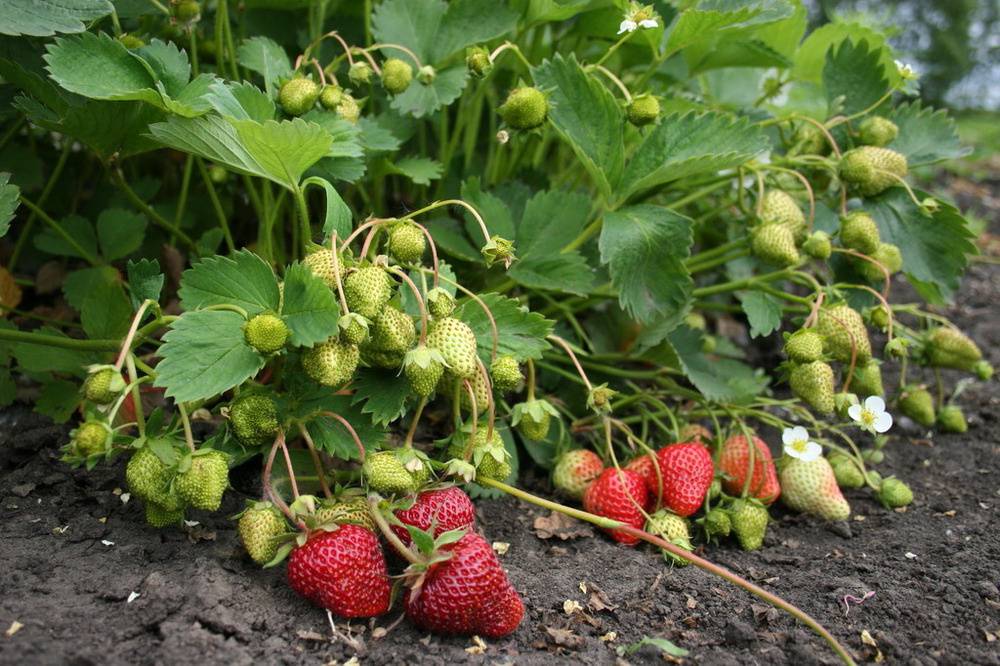
Shelter
They begin to prepare strawberries for cold weather several weeks before their onset. For shelter, sawdust, dry raspberry branches, fallen leaves, spruce and pine branches are used. The beds are covered with branches, and when the first snow falls, they rake it onto the bed. Agrofibre or agrotex is used from artificial material.These materials keep warm well in winter, preventing the ground from freezing.
What mistakes are made
Mistakes when growing strawberries in the garden:
- Thicken the planting and do not thin out the beds.
- Leave strawberries in the same place for a long time.
- Do not weed or loosen the soil.
- Plant seedlings after crops with which strawberries have similar diseases and need for the same nutrients.
- Ignore leaving.
- Do not apply organic and mineral fertilizers.
The most common mistake is not replanting strawberries. With prolonged growth in the same place, the soil is depleted, and the yield only gets worse every year.
